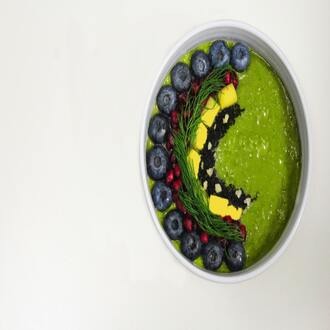Transcription Meals throughout the day
1. Meals throughout the day As we explained in the first presentation, when we intend to follow a diet or a meal plan, the two most important elements are: how much do I eat and what do I eat? But there are other elements much simpler to learn that can also contribute to the diet to produce the desired effects in our organism.
In this topic we will refer to one of them: the schedule of meals.
And to begin to get into the subject in this presentation we will know the benefits of maintaining stable schedules for each of the meals, as well as the amount of meals that we should do in the day and the main characteristics of each one of them.
How many meals should we eat during the day?
We should have more than four meals distributed throughout the day, so that the body can replenish the energy consumed during the activity. It is recommended that each meal should have the following energy intake:
- Breakfast should provide 25% of the total calories to be consumed throughout the day.
- Mid-morning should provide 10%.
- Lunch should provide 35%.
- The afternoon snack should provide 10%.
- Dinner should provide 20%.
Advantages of the distribution of food in five or more meals throughout the day
Having more meals a day allows incorporating a greater variety of foods and nutrients, improving the quality of the diet.
More frequent meals favor more moderate portions, facilitating digestion and optimizing nutrient absorption.
If more than 3 hours go by without eating, blood glucose levels decrease, which increases anxiety and makes it difficult to control portions.
When too much time is left between meals, the body reduces energy expenditure and protects fat reserves, which can increase the risk of overweight and obesity.
Why it is necessary to have a good breakfast
Breakfast should be considered one of the most important meals of the day because while we sleep the body consumes most of the energy reserves provided by dinner, so it is essential before starting any physical or mental activity to have the necessary energy to face it successfully.
Therefore, not having breakfast or not having it in an incomplete way reduces physical performance, causing tiredness, exhaustion, reduction of strength and discouragement. On the other hand, energy deficiencies also affect the brain, resulting in lack of concentration and memory, essential elements for study, intellectual work and sports practice.
Foods that should always be present in the breakfast
- Milk or its derivatives: This group of foods must guarantee the requirements of calcium and proteins of high biological value. They also provide significant amounts of vitamin A and D.
- Unsweetened whole grain cereals or their derivatives: These foods provide energy, B vitamins, minerals and dietary fiber.
- Fresh fruit: Fruits provide vitamins, minerals, fiber and antioxidant substances.
- Other healthy foods can also be included, such as nuts, vegetables, potatoes, omelets, chicken breast or turkey.
WARNING: The following foods should not be frequently included in breakfast: industrial soft drinks, sugar, honey, marmalade, pastries, cakes, butter, ice cream, sausages and other types of processed meats, etc.
What can we eat between meals?
The rations between meals contribute to distribute the energetic contribution throughout the day, providing the organism with the necessary energies to face the physical and mental requirements during the hours before lunch and dinner.
At these hours a fruit, or a juice, and a small sandwich of cooked ham, turkey or tuna can be taken. Milk or yogurt with four or five maria cookies could be taken instead.
What should we keep in mind when planning the meal?
- In order to offer a varied and balanced intake that includes representative products of the basic food groups, it is recommended that it is structured taking into account a first course, a second course with garnish, a dessert, bread and water.
- The first course should include one of the following foods: pasta, rice, potatoes, legumes and vegetables.
- The second course should include one of the following foods: fish, egg or meat. These dishes should be accompanied by vegetables.
- It is recommended to offer fruit, milk or dairy products for dessert. Occasionally, custard, flan and rice pudding may be included.
- Whole wheat bread and water should always be included to accompany the dishes.
What should dinner be like?
The last meal of the day should be light and should take place at least two hours before going to sleep, so that digestion is practically finished and does not interfere with sleep.
It is recommended to include rice or whole wheat pasta, soups, steamed or cooked vegetables, white fish, skinless chicken, tortillas and dairy products. Drinks containing stimulants such as coffee, tea and cola should be avoided.
schedule food




